
The Wanderer Returns. Then Quickly Leaves Again!

Featuring my triumphant return to Port Edgar Marina.
And the sad realisation that it's the same inhospitable, badly managed, poorly maintained, swell-ridden shithole that I sailed away from almost exactly three years ago :(
It's very disappointing to report that whilst the lucrative properties around the marina - the shops and restaurants - have been improved immeasurably whilst I was away, the infrastructure and facilities of the marina itself have not gained in the slightest. The pontoons are every bit as rotted and holed, the cleats as loose and unreliable and if anything there is even less tyre barrier and even more uncomfortable swell than when I left!
Not only that but the old amenities have completely evaporated, with the marina now offering a single men's toilet and two miniaturised shower stalls to be shared not only between all the berth holders but also the marina staff and even some of the local shop workers.
And all only a short cycle distance away from the pontoons!
The sooner they build this fancy new marina down in Leith to offer some real competition on the Forth the better for everyone I reckon.
From the very start Port Edgar management were unwelcoming - I hurried to the marina office to announce my glorious return after 3 years of travelling the high seas and their reception troll sourly informed me that "You're not allowed to receive mail here" whilst handing me a 'Welcome Home' card that some kind soul had inadvertently sent me in the post (thanks Flora xx).
I explained my plans to live onboard the yacht until I found a flat and was told that the marina policy was to allow no-one to stay aboard for more than two weeks and that I would have to leave after that. How a marina can function without allowing visiting folks to stay on their boats more than two weeks I simply don't understand but there you have it.
I've only come across two or three other marinas which were in the least bothered by the idea of paying customers actually using their marina, and they were only concerned about people spending more than two or three months living aboard. Mind you, those marinas didn't feel as if they might break apart and wash out to sea. Well, excepting Holyhead that is :)
I tussled with the reception troll over whether this two week period was consecutive or cumulative (apparently the inflexible marina policy is entirely at the troll's discretion) and we finally agreed on my being kicked out at the end of the month. Just time to dry out on the slip and restore Harmony's anti-fouling (badly needed), and to do all my laundry (for free - since Port Edgar management isn't competent enough to maintain the coin boxes on their washers and dryers).
Silver clouds eh?
To take a break from Port Edgar's inadequate toilet facilities, if only for a few days, I moved in with Flora and Marco.
Whilst there, in-between doing house repairs, I cooked a couple of traditional British roast dinners for Marco, who's from Italy and therefore completely ignorant about good food.
Flora has been wanting to try out a fancy starter she'd recently eaten and which I thought sounded like a good contender for my family's Christmas dinner: figs with goats cheese and basil. So she prepared them to kick off our classic roast beef dinner; featuring yorkshire puddings, boiled potatoes, horseradish sauce, some over-cooked asparagus and a rich gravy.
The gravy was absolutely delicious - if I say so myself.
I persuaded the nice Stockbridge butcher to chop me up a big bag of bones which I boiled up into stock to bulk out the typically meager roasting juices so we could have a decent amount of gravy.
And the sad realisation that it's the same inhospitable, badly managed, poorly maintained, swell-ridden shithole that I sailed away from almost exactly three years ago :(
It's very disappointing to report that whilst the lucrative properties around the marina - the shops and restaurants - have been improved immeasurably whilst I was away, the infrastructure and facilities of the marina itself have not gained in the slightest. The pontoons are every bit as rotted and holed, the cleats as loose and unreliable and if anything there is even less tyre barrier and even more uncomfortable swell than when I left!
Not only that but the old amenities have completely evaporated, with the marina now offering a single men's toilet and two miniaturised shower stalls to be shared not only between all the berth holders but also the marina staff and even some of the local shop workers.
And all only a short cycle distance away from the pontoons!
The sooner they build this fancy new marina down in Leith to offer some real competition on the Forth the better for everyone I reckon.
From the very start Port Edgar management were unwelcoming - I hurried to the marina office to announce my glorious return after 3 years of travelling the high seas and their reception troll sourly informed me that "You're not allowed to receive mail here" whilst handing me a 'Welcome Home' card that some kind soul had inadvertently sent me in the post (thanks Flora xx).
I explained my plans to live onboard the yacht until I found a flat and was told that the marina policy was to allow no-one to stay aboard for more than two weeks and that I would have to leave after that. How a marina can function without allowing visiting folks to stay on their boats more than two weeks I simply don't understand but there you have it.
I've only come across two or three other marinas which were in the least bothered by the idea of paying customers actually using their marina, and they were only concerned about people spending more than two or three months living aboard. Mind you, those marinas didn't feel as if they might break apart and wash out to sea. Well, excepting Holyhead that is :)
I tussled with the reception troll over whether this two week period was consecutive or cumulative (apparently the inflexible marina policy is entirely at the troll's discretion) and we finally agreed on my being kicked out at the end of the month. Just time to dry out on the slip and restore Harmony's anti-fouling (badly needed), and to do all my laundry (for free - since Port Edgar management isn't competent enough to maintain the coin boxes on their washers and dryers).
Silver clouds eh?
To take a break from Port Edgar's inadequate toilet facilities, if only for a few days, I moved in with Flora and Marco.
Whilst there, in-between doing house repairs, I cooked a couple of traditional British roast dinners for Marco, who's from Italy and therefore completely ignorant about good food.
Flora has been wanting to try out a fancy starter she'd recently eaten and which I thought sounded like a good contender for my family's Christmas dinner: figs with goats cheese and basil. So she prepared them to kick off our classic roast beef dinner; featuring yorkshire puddings, boiled potatoes, horseradish sauce, some over-cooked asparagus and a rich gravy.
The gravy was absolutely delicious - if I say so myself.
I persuaded the nice Stockbridge butcher to chop me up a big bag of bones which I boiled up into stock to bulk out the typically meager roasting juices so we could have a decent amount of gravy.
Unfortunately the centre-piece beef was disappointingly tough and dry.
I presume a combination of a relatively poor joint (butcher's fault),
and an unsuitable roasting method (my fault).
Since the butcher's sirloin was dauntingly expensive I had gone for a cheaper rolled topside (or was it silverside?)
and roasted it at a moderate temperature (around 180°C) for a couple of hours.
Perhaps the joint would have more suited longer cooking at a much lower temperature, say 100°C possibly in a little liquid? And it also might have benefited from being sliced much more thinly than I managed?
Still, the failure of the meat was more than made up for by the magnificence of the Yorkshires, which exploded out of their muffin tins like miniature aliens, and the richness of the gravy.
Did I mention the gravy?
All was not lost with the chewy beef though since Marco used the leftovers to treat us to some fine Italian meatballs called Plopettes - justa lika his Mamma useda to makea :)
Fortunately we made up for this partial culinary success with a very fine lamb dinner beginning with a surprisingly tasty turnip soup (possibly because it was mostly sweet potato) and finishing with a classic bread and butter pudding. Served with a not-so-classic vanilla ice cream.
The roast leg of lamb was absolutely gorgeous. Perhaps because, as Flora never resisted reminding us, it was extraordinarily expensive.
We cooked it at a very high heat with a ton of garlic à la Keith Floyd (though without the anchovies) and served it with salsa verde, creamed leeks, some green beans with lemon, capers, garlic and anchovies and the usual roast potatoes and parsnips.
Flora turned down my offer of bread sauce :(
Every so often Flora gets a care package from some French friends, and I was lucky enough to be there when the latest one arrived. She suggested we attempt to make a meal out of one of the cans of mystery meat, which turned out to be some kind of tinned French haggis.
Quelle horreur!
I won't even attempt to describe the smell. Or the texture. Or the taste.
I'm not generally a fussy eater but take my advice - if anyone ever offers you some delicious French haggis; Run! Run Fast!
The eventual return of Flora's Mum meant I got kicked back to Port Edgar (getting kicked out seems to becoming something of a pattern) since she can only handle one awkward house-guest at a time, but I didn't leave empty-handed. Flora kindly gifted me a bottle of weird Czech liqueur called Becherovka for flavouring vegetables, and cleaning toilets.
And now my two Port Edgar weeks are up, so I'll be setting off on my nautical wanderings again - I'm heading down the coast for Newcastle's Royal Quays Marina where I fancy spending the winter. In preparation for which I'll be soon making up some aromatic Christmas stock for our fabulous Christmas gravy.
Sigh.
I shall miss having a real kitchen.

Perhaps the joint would have more suited longer cooking at a much lower temperature, say 100°C possibly in a little liquid? And it also might have benefited from being sliced much more thinly than I managed?
Still, the failure of the meat was more than made up for by the magnificence of the Yorkshires, which exploded out of their muffin tins like miniature aliens, and the richness of the gravy.
Did I mention the gravy?
All was not lost with the chewy beef though since Marco used the leftovers to treat us to some fine Italian meatballs called Plopettes - justa lika his Mamma useda to makea :)
Fortunately we made up for this partial culinary success with a very fine lamb dinner beginning with a surprisingly tasty turnip soup (possibly because it was mostly sweet potato) and finishing with a classic bread and butter pudding. Served with a not-so-classic vanilla ice cream.
The roast leg of lamb was absolutely gorgeous. Perhaps because, as Flora never resisted reminding us, it was extraordinarily expensive.
We cooked it at a very high heat with a ton of garlic à la Keith Floyd (though without the anchovies) and served it with salsa verde, creamed leeks, some green beans with lemon, capers, garlic and anchovies and the usual roast potatoes and parsnips.
Flora turned down my offer of bread sauce :(
Every so often Flora gets a care package from some French friends, and I was lucky enough to be there when the latest one arrived. She suggested we attempt to make a meal out of one of the cans of mystery meat, which turned out to be some kind of tinned French haggis.
Quelle horreur!
I won't even attempt to describe the smell. Or the texture. Or the taste.
I'm not generally a fussy eater but take my advice - if anyone ever offers you some delicious French haggis; Run! Run Fast!
The eventual return of Flora's Mum meant I got kicked back to Port Edgar (getting kicked out seems to becoming something of a pattern) since she can only handle one awkward house-guest at a time, but I didn't leave empty-handed. Flora kindly gifted me a bottle of weird Czech liqueur called Becherovka for flavouring vegetables, and cleaning toilets.
And now my two Port Edgar weeks are up, so I'll be setting off on my nautical wanderings again - I'm heading down the coast for Newcastle's Royal Quays Marina where I fancy spending the winter. In preparation for which I'll be soon making up some aromatic Christmas stock for our fabulous Christmas gravy.
Sigh.
I shall miss having a real kitchen.

Figs with Crème Fraîche, Goats Cheese and Basil
veg starter cheese
Flora had this at a restaurant, thought it was a good idea and recreated it at home.
It was really nice, and a potential Christmas starter - for families which are not averse to exotic fruit :)
Serve one fig per person
Ingredients
- fresh figs
- crème fraîche
- soft goats cheese e.g. Chavroux
- basil leaves
- Parma ham optional
Mix around 50/50 soft goats cheese and a good crème fraîche. Thinly slice a generous quantity of basil leaves and mix in.
Cut the fig stalks so they fig will stand upright if necessary. Cut a deep cross into the top of each fig and open like a flower. Fill with the cream and goats cheese mixture.
Decorate with a sprig of basil leaves and a roll of Parma ham and serve.
Cut the fig stalks so they fig will stand upright if necessary. Cut a deep cross into the top of each fig and open like a flower. Fill with the cream and goats cheese mixture.
Decorate with a sprig of basil leaves and a roll of Parma ham and serve.
Very nice combination.
I would be interested in trying this out by wrapping the fig in Parma ham and baking until the ham crisps. With or without the filling already inside.
Bit exotic for a Christmas starter at the Chav Family household though.
I would be interested in trying this out by wrapping the fig in Parma ham and baking until the ham crisps. With or without the filling already inside.
Bit exotic for a Christmas starter at the Chav Family household though.
Turnip Soup
soup veg
Flora had a turnip soup she enjoyed up at Firbush, so she made her own with a little help from me.
You could choose a garlicky flavour and roast a few garlic cloves to add, or you could go with nutmeg flavour instead.
You could choose a garlicky flavour and roast a few garlic cloves to add, or you could go with nutmeg flavour instead.
Serves 4
Ingredients
- 1 turnip
- 2 sweet potatoes
- 1 onion
- butter or olive oil for frying
- a glass of white wine
- stock or water
- double cream
- roast garlic or nutmeg
- salt & ground white pepper
- chives, chopped for serving
Peel and roughly chop the onion, turnip and sweet potatoes.
Heat butter or olive oil in a large pan and sweat the vegetables until the onions turn glassy and the roots begin to soften at the edges. Don't let the onions brown.
If you're using roast garlic put the cloves in a hot oven.
Add a glass of white wine to the pan and bubble off then cover the vegetables with stock or water, put on the lid and simmer until the roots are very soft. Perhaps an hour.
Blend the soup in a liquidiser or using a stick blender. Squeeze in the roast garlic flesh, or grind in some nutmeg. I think it would be a mistake to go for both!
Season with salt & ground white pepper.
Stir in double cream, sprinkle with chopped chives and fried garlic slices if you happen to have some and serve.
Heat butter or olive oil in a large pan and sweat the vegetables until the onions turn glassy and the roots begin to soften at the edges. Don't let the onions brown.
If you're using roast garlic put the cloves in a hot oven.
Add a glass of white wine to the pan and bubble off then cover the vegetables with stock or water, put on the lid and simmer until the roots are very soft. Perhaps an hour.
Blend the soup in a liquidiser or using a stick blender. Squeeze in the roast garlic flesh, or grind in some nutmeg. I think it would be a mistake to go for both!
Season with salt & ground white pepper.
Stir in double cream, sprinkle with chopped chives and fried garlic slices if you happen to have some and serve.
Very tasty. For turnip.
The Best Yorkshire Puddings
side veg
The authors at Serious Eats
are strangely specific about the number of puddings these recipe quantities will yield.
You are instructed to divide the mixture evenly between any of the following:
- two 8-inch cast iron or non-stick skillets
- just 8 of the wells of two 6-well popover tins
- all the wells in one 12-well standard muffin tin
- all the wells in one 24-well mini muffin tin
Serves 4-6
Ingredients
- 4 large eggs
- 150g all-purpose flour
- 175ml whole milk
- 25ml water or just use 200ml of skimmed milk
- 2g salt
- 100ml beef drippings, lard, shortening, or vegetable oil
Combine the eggs, flour, milk, water, and salt in a medium bowl and whisk until a smooth batter is formed.
Let the batter rest at room temperature for at least 30 minutes.
Alternatively, for best results, cover with clingfilm and refrigerate batter overnight or for up to 3 days.
Return the batter to room temperature before cooking.
Adjust oven rack to center position and preheat oven to 450°F/230°C/Gas Mark 8 Or maybe less, say 200°C, particularly for larger puds! . Divide drippings (or other fat) evenly between your choice of containers on a baking sheet. Preheat in the oven until the fat is smoking hot, about 10 minutes.
Lift out the pans or tins and divide the batter evenly between every well (or between the two pans if using pans). The wells should be filled between ½ and ¾ of the way (if using pans, they should be filled about ¼ of the way). Immediately return to oven. Bake until the Yorkshire puddings have just about quadrupled in volume, are deep brown all over, crisp to the touch, and sound hollow when tapped. Smaller ones will take about 15 minutes, popover- or skillet-sized ones will take around 25 minutes.
Serve immediately. (Though apparently you can cool them completely, transfer them to a zip-lock freezer bag, and freeze for up to 3 months. Reheat them in a hot toaster oven before serving. I wouldn't know though, I've never had any left over.)
Adjust oven rack to center position and preheat oven to 450°F/230°C/Gas Mark 8 Or maybe less, say 200°C, particularly for larger puds! . Divide drippings (or other fat) evenly between your choice of containers on a baking sheet. Preheat in the oven until the fat is smoking hot, about 10 minutes.
Lift out the pans or tins and divide the batter evenly between every well (or between the two pans if using pans). The wells should be filled between ½ and ¾ of the way (if using pans, they should be filled about ¼ of the way). Immediately return to oven. Bake until the Yorkshire puddings have just about quadrupled in volume, are deep brown all over, crisp to the touch, and sound hollow when tapped. Smaller ones will take about 15 minutes, popover- or skillet-sized ones will take around 25 minutes.
Serve immediately. (Though apparently you can cool them completely, transfer them to a zip-lock freezer bag, and freeze for up to 3 months. Reheat them in a hot toaster oven before serving. I wouldn't know though, I've never had any left over.)
If you get this right, like I did, your Yorkshires will rise in the oven like a terrifying, if somewhat uneven, science experiment.
Then deflate again disappointingly the instant you take them out.
Best have your guests admire them while they're still cooking.
Becherovka Vegetables
side veg vegan
Becherovka is a slightly odd herbal liqueur from the Czech Republic, vaguely reminiscent of Jagermeister.
As recommended to me by my friend Flora as an excellent foil for flavouring carrots. Though it also works well with celery. And probably turnips?
Ingredients
- Becherovka
- butter or olive oil
- vegetables, e.g. carrots or celery
Find a small pan with a tight-fitting lid.
If you're using carrots, peel and cut them into matchsticks then sweat them in butter until softening.
If celery, cut into short lengths and sweat in olive oil until beginning to colour.
Add Becherovka to barely cover, season, put on the lid and leave to simmer until the vegetable is tender, 20-30 minutes. Perhaps longer for the celery.
Add water if the vegetables dry out too soon.
If you're using carrots, peel and cut them into matchsticks then sweat them in butter until softening.
If celery, cut into short lengths and sweat in olive oil until beginning to colour.
Add Becherovka to barely cover, season, put on the lid and leave to simmer until the vegetable is tender, 20-30 minutes. Perhaps longer for the celery.
Add water if the vegetables dry out too soon.
Surprisingly simple, surprisingly good!
Polpette
Italian meatballs
meat starter snack cheese
These polpette are the Italian version of stovies - meatballs made from leftover meat.
As prepared by Flora's beau Marco following his Mother's recipe.
As prepared by Flora's beau Marco following his Mother's recipe.
Serves 2-4
Ingredients
- ½ lb cooked meat, minced
- ¼ lb hard cheese, grated
- 2 potatoes, cooked, mashed
- 2 eggs
- bunch parsley, chopped
- 2 cloves garlic, crushed
- nutmeg, grated
- stale or baked bread, crumbed
- butter, for frying
Mince the meat in a meat grinder or food processor don't overdo this or you'll end up with paste.
Grate the cheese, boil then mash the potatoes, crush the garlic, chop the parsley.
Mix all together with enough egg to bind, salt, pepper and a grinding of nutmeg.
Bake slices of bread until dried if they are insufficiently stale, then grate or blend in a food processor to make fine crumbs.
Roll the meat mixture into balls the size of plums, then roll in the bread crumbs and set aside. If you prefer them with a shaggier breadcrumb coating, beat an additional egg, roll the crumbed balls in the egg and then again in the breadcrumbs for double the coverage.
Flatten slightly then fry gently in butter until browned.
Serve with a green salad.
Mix all together with enough egg to bind, salt, pepper and a grinding of nutmeg.
Bake slices of bread until dried if they are insufficiently stale, then grate or blend in a food processor to make fine crumbs.
Roll the meat mixture into balls the size of plums, then roll in the bread crumbs and set aside. If you prefer them with a shaggier breadcrumb coating, beat an additional egg, roll the crumbed balls in the egg and then again in the breadcrumbs for double the coverage.
Flatten slightly then fry gently in butter until browned.
Serve with a green salad.
Although Marco and his Italian family serve them with no sauces,
I found horseradish sauce to be a good accompaniment.
Of course if you're American then you won't be comfortable unless they come with spaghetti and a tomato sauce.
Bread and Butter Pudding
dessert veg
I didn't exactly follow a recipe here, and didn't really make a note of the quantities I used, but honestly I think it will be hard to go wrong.
(Famous last words!)
You can use as little cream as you like with the milk. You might also flavour with lemon or orange peel, or you might try glazing the cooked pudding with a smear of apricot jam.
You can use as little cream as you like with the milk. You might also flavour with lemon or orange peel, or you might try glazing the cooked pudding with a smear of apricot jam.
Serves 4
Ingredients
- half a dozen or so slices of bread
- butter
- raisins or currants
- about 200ml milk
- about 200ml double cream
- 3 eggs
- grated nutmeg or cinnamon powder
- vanilla pod or vanilla essence optional
- 2-3 tablespoons brown sugar plus extra for topping
Butter a baking dish.
Preheat the oven to Gas Mark 4/350°F/180°C Butter each slice of bread and cut in half diagonally. If you like you can remove the crusts. I did, but it isn't usual. Fill the baking dish with layers of bread slices, scattering each layer with raisins or sultanas and a light grating of nutmeg or cinnamon.
Whisk the eggs in a bowl.
Heat half milk half cream in a saucepan, add the vanilla pod or essence if using and 3 tablespoons of sugar. Warm without boiling, then whisk into the eggs and pour (straining out the vanilla pod) over the bread in the baking dish pressing the slices down into the mixture. Don't overfill as the mixture will swell. Leave to sit for 30 minutes, then sprinkle with more sugar and bake for 30-40 minutes until swollen and golden brown on top.
Preheat the oven to Gas Mark 4/350°F/180°C Butter each slice of bread and cut in half diagonally. If you like you can remove the crusts. I did, but it isn't usual. Fill the baking dish with layers of bread slices, scattering each layer with raisins or sultanas and a light grating of nutmeg or cinnamon.
Whisk the eggs in a bowl.
Heat half milk half cream in a saucepan, add the vanilla pod or essence if using and 3 tablespoons of sugar. Warm without boiling, then whisk into the eggs and pour (straining out the vanilla pod) over the bread in the baking dish pressing the slices down into the mixture. Don't overfill as the mixture will swell. Leave to sit for 30 minutes, then sprinkle with more sugar and bake for 30-40 minutes until swollen and golden brown on top.
Delicious. And seems foolproof.
Nice served with a scoop of ice cream.
Nice served with a scoop of ice cream.
Aromatic Poached Chicken
soup ingredient fowl
This is a slightly less aromatic version of the chicken boiled to produce
coronation chicken
so that the cooking liquid is more suited to making a chicken stock
for, say, your christmas gravy.
You might then use the cooked chicken to make a Thai soup.
Every. Fucking. Year!
You might then use the cooked chicken to make a Thai soup.
Every. Fucking. Year!
Makes about 2 litres of aromatic stock. And a cooked chicken.
Ingredients
- 1 large chicken
- half white wine - half water
- 2 star anise
- zest of ½ orange
- 1 tsp black peppercorns
- 1 tsp green peppercorns
- 1 tsp allspice
- bunch of thyme sprigs
- bunch of rosemary sprigs
- a few bay leaves
- half a dozen cloves
- 2 blades of mace
Zest half an orange being careful to avoid including the pith.
Put the chicken breast-side up Or down? Does it make any difference? in a pot with a lid together with the zest, herbs and spices.
Add cold half wine half water to come at least half-way up the chicken.
Leave to cool in the stock if not using immediately.
You can add chopped onions and carrots too, if you want to enrich the stock even more.
Supposedly
adding a little vinegar or lemon juice
can also help to encourage gelatin to dissolve out of the chicken. Though you might want to go sparingly unless you want vinegary or lemony stock.
Bring slowly to the boil, cover well (clingfilm can help) and simmer gently for about 30-40 minutes until the chicken is cooked.
You might consider not simmering at all, but just turning the pot off immediately it reaches a boil
and leaving the chicken to finish cooking in the residual heat.
Leave to cool in the stock if not using immediately.
Great poaching liquid.
Now you just need to use it together with the roasted bones from the stripped chicken carcass to make a lovely dark chicken stock.
With which to make the Best Damn Christmas Gravy in the world.
The chicken ain't bad either.
Now you just need to use it together with the roasted bones from the stripped chicken carcass to make a lovely dark chicken stock.
With which to make the Best Damn Christmas Gravy in the world.
The chicken ain't bad either.


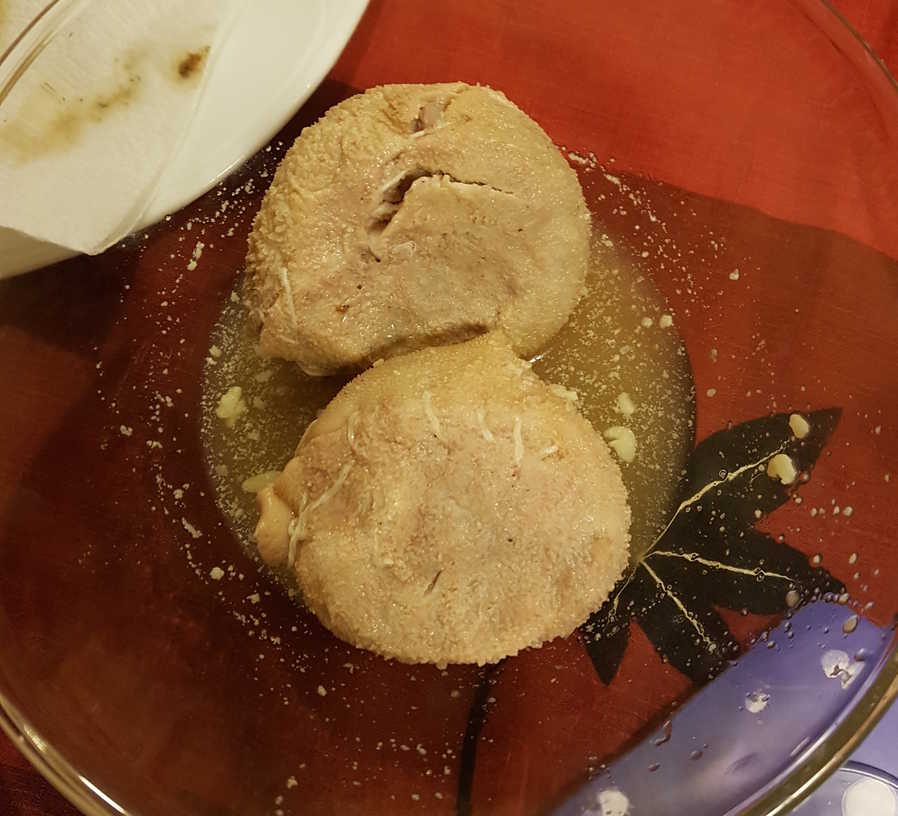


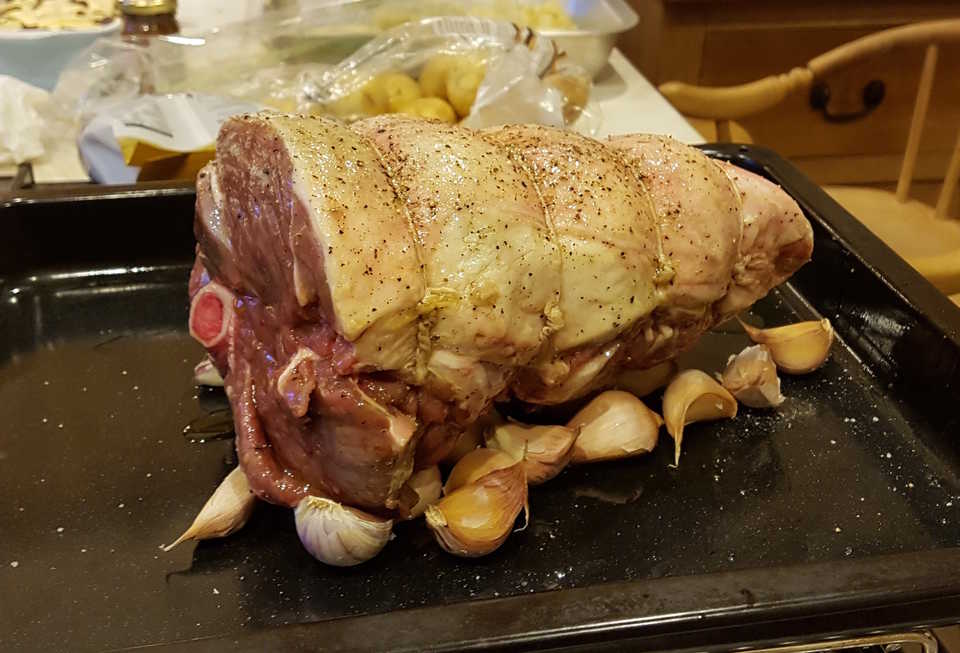



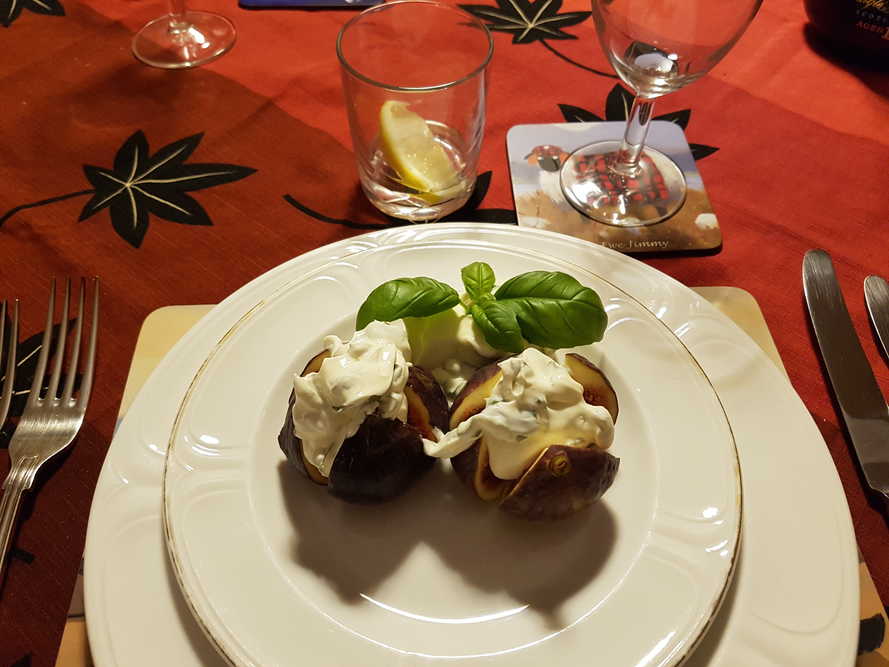


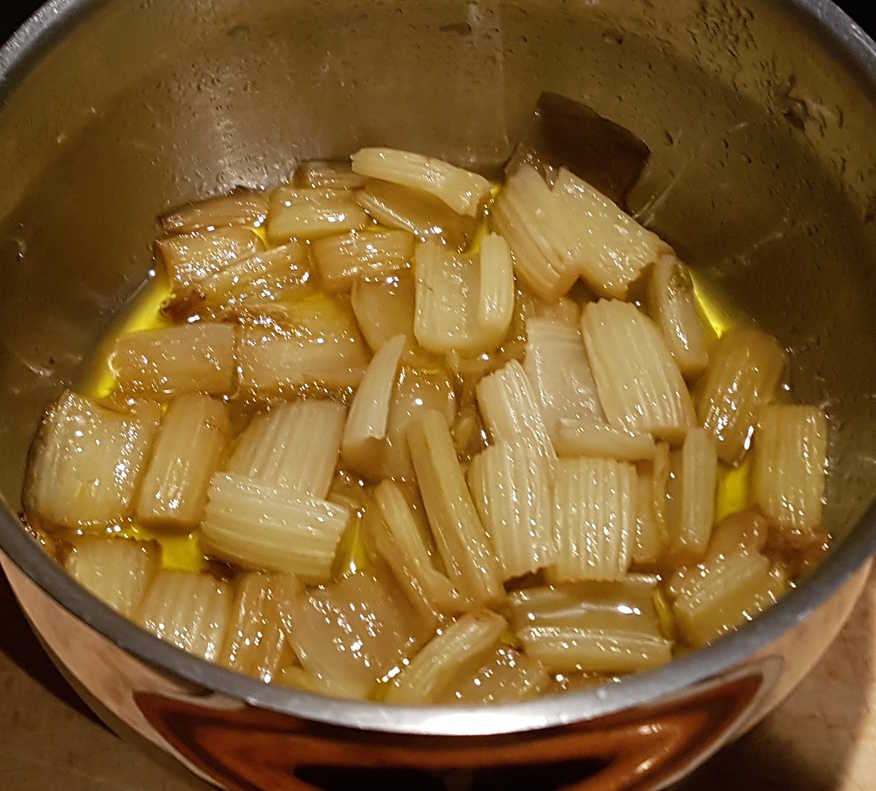

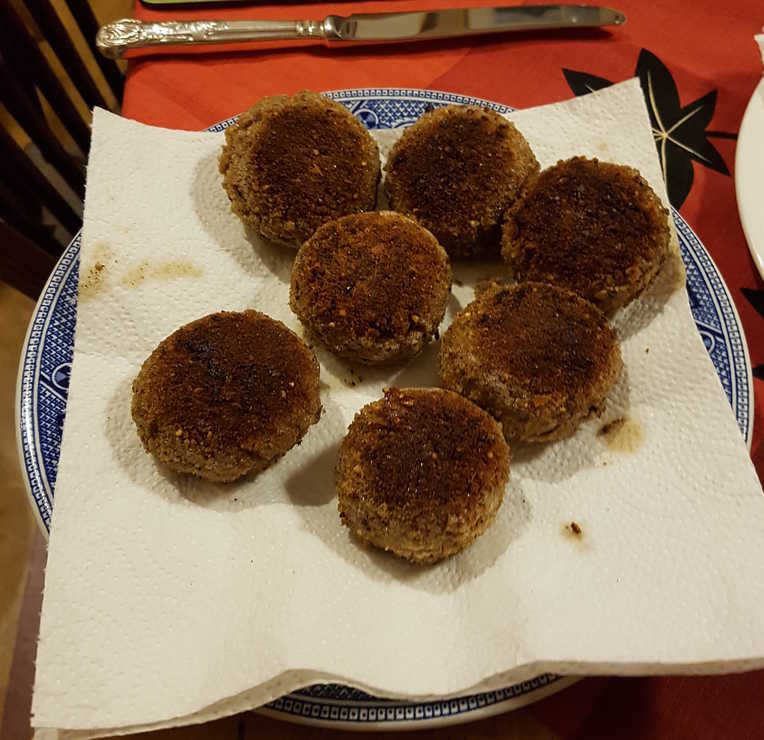
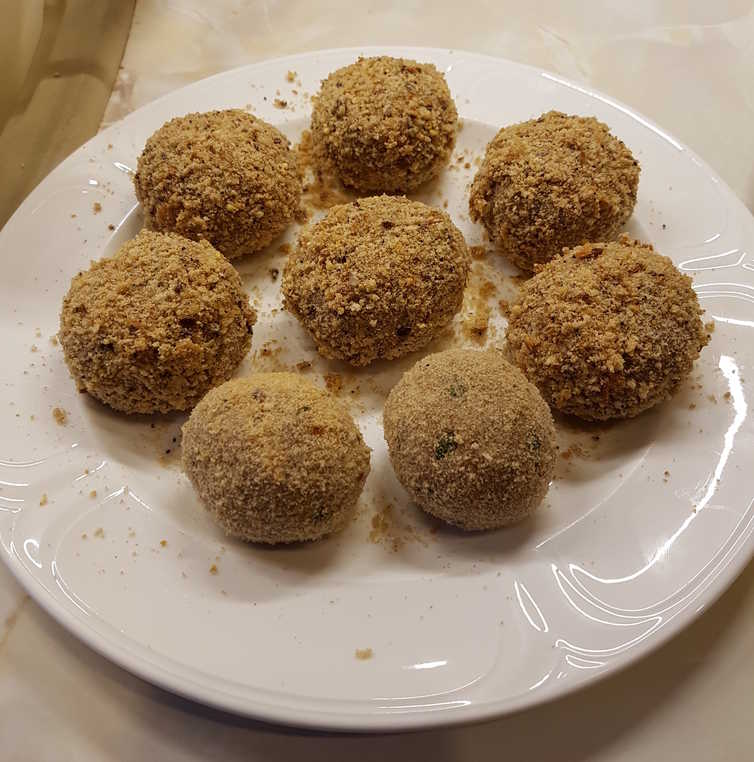
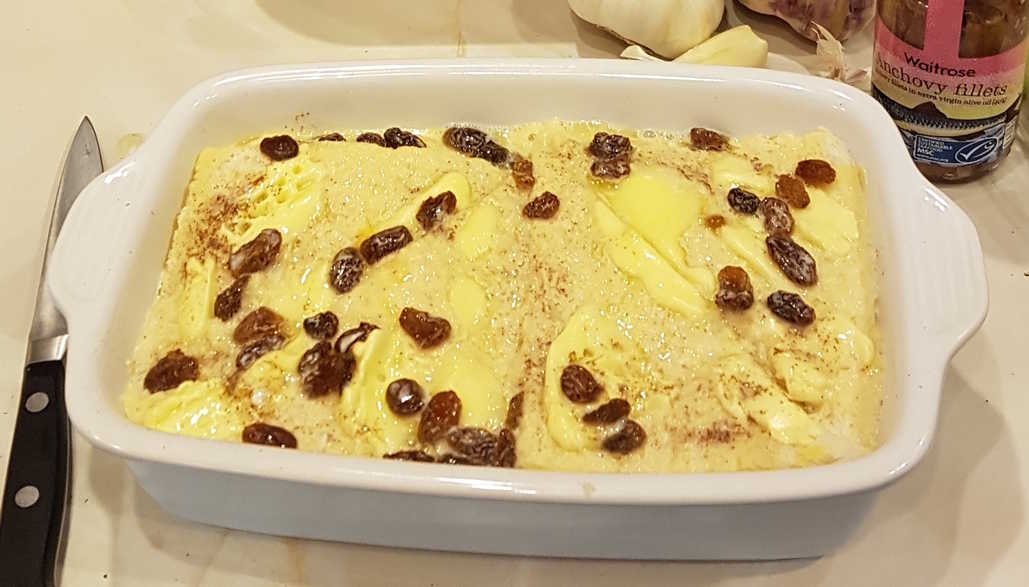
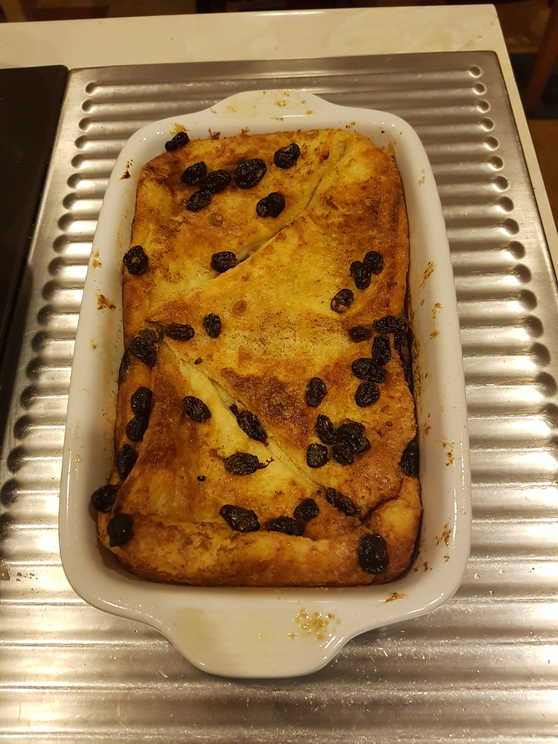
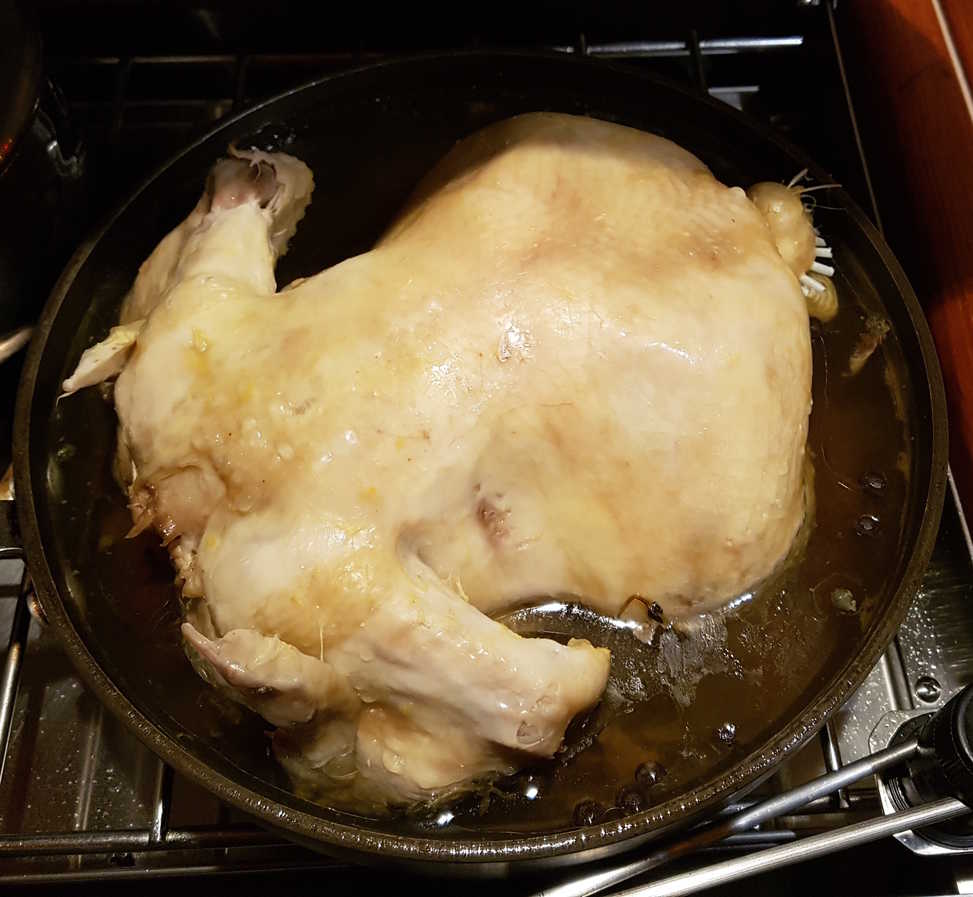
Well so long Marco - it was good to meet you :(
Flora - I did offer a choice betweeen creamed leeks and bread sauce, two similar creamy white side dishes. And you decided on the leeks. I don't hold it against you though x.
I look forward to our future really and truly edible cooking :)
#2 – 22 February, 2020 at 4:53 pm
I entirely agree with you Karl. I think though I have no recollection of saying no to bread sauce as I love bread sauce. But you know I guess women can be fickle as the day is long. Just an update on my beau situation. He definitely wanted us to end and not get back together EVER. SO sad times on that front. But it means more cooking with Karl. And I’ve now been on a cooking course so you never know I might cook something really and truly edible.
#1 – 21 February, 2020 at 11:14 pm